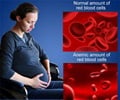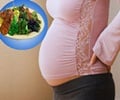A study by researchers at the Johns Hopkins Bloomberg School of Public Health has found that measurements of hemoglobin A1c (HbA1c) more accurately identify persons at risk for clinical outcomes
A study by researchers at the Johns Hopkins Bloomberg School of Public Health has found that measurements of hemoglobin A1c (HbA1c) more accurately identify persons at risk for clinical outcomes than the commonly used measurement of fasting glucose.
HbA1c levels accurately predict future diabetes, and they better predict stroke, heart disease and all-cause mortality as well. The study appeared in the March 4, 2010, issue of New England Journal of Medicine.As a diagnostic, "HbA1c has significant advantages over fasting glucose," said Elizabeth Selvin, PhD, MPH, the study''s lead author. The A1c test has low variability from day to day, levels are not as affected by stress and illness, it has greater stability and the patient is not required to fast before the test is performed.
This study is published on the heels of a major change in the way doctors diagnose diabetes. In January, the American Diabetes Association (ADA) published revised recommendations for the screening and diagnosis of diabetes. The revised recommendations include, for the first time, recommendations to use HbA1c to diagnose diabetes and also to identify people at risk of developing diabetes in the future, also known as "pre-diabetes."
The new findings can help doctors and patients interpret HbA1c test results. In the study, people with HbA1c levels between 5.0 to 5.5 percent were identified as being within "normal" range. The majority of the U.S. adult population is within this range. With each incremental HbA1c increase, the study found, the incidence of diabetes increased as well; those at a level of 6.5 percent or greater are considered diabetic, and those between 6.0 and 6.5 percent are considered at a "very high risk" (9 times greater than those at the "normal" range) for developing diabetes.
The revised ADA guidelines classify people with HbA1c levels in the range of 5.7 to 6.4 percent as "at very high risk" for developing diabetes over 5 years. The range of 5.5 to 6 percent, according to the ADA guidelines, is the appropriate level to initiate preventive measures.
The study measured HbA1c in blood samples from more than 11,000 people, black and white adults, who had no history of diabetes. The samples were obtained between 1990 and 1992 as part of the Atherosclerosis Risk in Communities (ARIC) Study at four ARIC field centers in Hagerstown, Md. (the George W. Comstock Center for Public Health Research and Prevention), Minneapolis, Minn. (University of Minnesota), Jackson, Miss. (University of Mississippi Medical Center) and Forsyth County, N.C. (University of North Carolina). The samples have been in cold storage since their collection. "It is amazing to be able to use blood samples collected over a decade ago," said Selvin, because researchers were able to look at participants'' measurements and compare to outcomes that occurred during 15 years of follow-up.
Advertisement
This research was supported by NIH/NIDDK grants and the Johns Hopkins Diabetes Research and Training Center. The Atherosclerosis Risk in Communities Study is carried out as a collaborative study supported by the National Heart, Lung, and Blood Institute.
Advertisement
Source-Newswise
RAS















